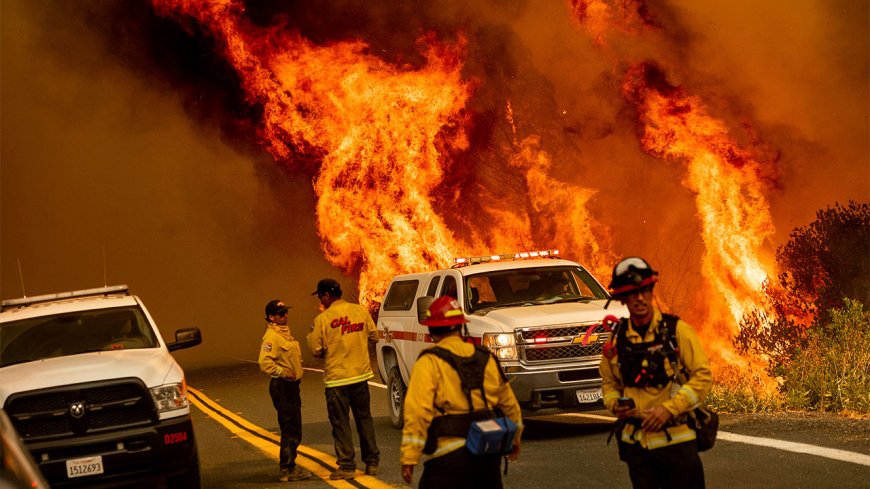California’s Largest Wildfire of the Season Rages in Central Region — Crews Scramble to Contain Growing Blaze
The largest wildfire of California’s 2025 season continues to expand in the Central region, prompting evacuations and a massive containment effort as crews battle worsening conditions.

California’s Largest Wildfire of the Season Rages in Central Region — Crews Scramble to Contain Growing Blaze
By Ronald Kapper | August 6, 2025
CENTRAL CALIFORNIA — A massive wildfire sweeping through the heart of Central California has become the largest blaze the state has faced this wildfire season, fire officials confirmed Wednesday. The blaze, dubbed the Ranchland Fire, has now scorched more than 87,000 acres across Fresno and Tulare counties, forcing thousands of residents to evacuate and placing a heavy strain on already stretched firefighting resources.
The fire, which ignited on July 30, rapidly expanded due to triple-digit temperatures, low humidity, and gusting winds. As of Wednesday morning, the fire is only 18% contained, according to the California Department of Forestry and Fire Protection (Cal Fire).
“This is an extremely volatile situation. The terrain is steep, the vegetation is bone dry, and resources are being pushed to their limits,” said Cal Fire spokesperson Jaime Norwood in a morning press briefing.
Cal Fire reported that more than 2,500 firefighters, including air tankers, bulldozers, and ground crews, are working around the clock to slow the fire’s advance. Mandatory evacuation orders remain in place for multiple communities near the Sierra Nevada foothills, with emergency shelters activated in Fresno and Visalia.
Homes Lost, Air Quality Plummeting
At least 112 structures have been destroyed and over 200 more remain under immediate threat, according to initial damage assessments. Power lines have been downed, and several state highways have been closed due to heavy smoke and active flames. The Air Quality Index (AQI) in much of Central California has surpassed 300, considered hazardous by federal standards.
“We’ve had to distribute thousands of N95 masks in just the last 24 hours,” said Fresno County Public Health Officer Dr. Lena McCarthy. “The smoke is affecting people far beyond the immediate fire zones.”
Satellite imagery from NASA’s Earth Observatory shows a massive plume of smoke stretching into Nevada and parts of southern Oregon, further compounding regional air quality concerns.
Related: ABC7 News — California's Largest Wildfire of 2025 Grows in Central Valley
Climate Factors and Fire Season Outlook
Experts attribute the fire’s rapid expansion to the state’s ongoing megadrought conditions, now entering their fifth year. According to the U.S. Drought Monitor, over 65% of California is experiencing extreme drought, with Central California identified as one of the most at-risk zones for fire ignition and spread.
“This is exactly the kind of fire behavior we feared as vegetation becomes more flammable each year,” said climate scientist Dr. Miguel Navarro from UC Davis.
2025 was predicted to be one of the worst fire seasons in recent memory, and with over 700 wildfires already recorded statewide since June, Cal Fire has warned that August and September may bring even greater threats unless weather conditions change.
Read more: Cal Fire Incident Dashboard — Current Wildfire Status
What Residents Should Know
Local officials are urging residents in nearby counties to prepare for possible evacuations and to stay updated through official emergency channels. Here's what you need to know:
-
Evacuation centers are operating in Clovis, Porterville, and Reedley, offering temporary shelter, food, and medical care.
-
PG&E has issued warnings of potential rolling blackouts if fire conditions worsen near power infrastructure.
-
Authorities continue to investigate the cause of the Ranchland Fire, though initial reports suggest downed power lines may be involved.
State and Federal Response
Governor Gavin Newsom declared a state of emergency for Fresno and Tulare counties late Tuesday, which opens the door for federal disaster relief and funding. Firefighting crews from Arizona, Nevada, and Oregon have also been dispatched under mutual aid agreements.
The Federal Emergency Management Agency (FEMA) has been deployed to assist in logistical coordination and damage assessment. The National Guard has sent helicopters for water drops in inaccessible areas.
Looking Ahead
With containment still days—if not weeks—away, California’s largest wildfire this season may become a grim indicator of what's to come in 2025. Fire officials continue to plead with residents to comply with evacuation orders and stay informed.
“We’ve seen how quickly these fires can escalate. Please don’t wait until it’s too late,” urged Cal Fire’s Norwood.
The Ranchland Fire is expected to remain active through the weekend, with potential for further expansion depending on wind conditions and firefighting progress.









